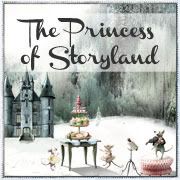About SamiK
I'm a Library Director for a small(ish) Texas town with a desire to share my love of books and the library with my community.
Currently, I am working towards my MLS (Master of Library Science) from Texas Woman's University (my alma mater!).
When I'm not treading through a pile a school work and work work, I make precious memories with both my handsome men at home. Whether we are playing with the sand between our toes, making a campfire, or just taking in a movie at home, every moment is unique.
Powered by Blogger.
Labels
- #mmblogtour (1)
- 10 q's (1)
- 2011 (1)
- 2012 (1)
- Ally Condie (2)
- Blue Bloods (1)
- Book Review (20)
- books (3)
- bulletin board (1)
- Child's Play (1)
- cinder (1)
- collection (1)
- craft (1)
- Crossed (1)
- currently reading (6)
- Dash and Lily's Book of Dares (1)
- display (1)
- dreaming anastasia (1)
- extras (1)
- flamingnet (1)
- Flat-Out Love (1)
- grad school (6)
- guest post (1)
- Halloween (1)
- house of night (1)
- hunger games (1)
- jacci turner (2)
- Jake Vander Ark (1)
- James Dashner (3)
- jay asher (1)
- Jessica Park (1)
- joy preble (2)
- julia karr (2)
- just added (2)
- Just Checked Out (1)
- lease (1)
- Lenobia's Vow (2)
- lighthouse nights (1)
- ls5603 (6)
- marissa meyer (1)
- Matched (1)
- mcnaughton (1)
- midnight in paris (1)
- new ya (1)
- Out Live Your Life (1)
- P.C. Cast (2)
- picture books (1)
- read-a-thon (1)
- resolutions (2)
- Sherry Soule (1)
- soho teen (1)
- spider (1)
- spiderweb (1)
- stephenie myer (1)
- teen tech week (1)
- texas teens read (1)
- The Accidental Siren (1)
- The Cage (1)
- the death cure (1)
- the future of us (1)
- the host (1)
- The Maze Runner (2)
- top ten tuesday (1)
- traditional literature (1)
- truth (2)
- twu (6)
- upcoming release (1)
- update (1)
- vacation reads (1)
- welcome kits (1)
- XVI (2)
- ya lease (1)
- young adult (1)
October 29, 2015
LS5603 - GENRE 4 - INFORMATIONAL
10:59 PM | Posted by
samik
OUR ELEANOR: A SCRAPBOOK LOOK AT ELEANOR ROOSEVELT'S REMARKABLE LIFE
1. Bibliography
Fleming, Candace. 2005. Our Eleanor: A Scrapbook Look at Eleanor Roosevelt's Remarkable Life. New York: Atheneum Books for Young Readers. ISBN 978-0-689-86544-2
2. Plot Summary
Candace Fleming returns again with another award winning biography of one of America's greats. Readers will get to know Eleanor as the person rather than the elegant former First Lady in Fleming's unique scrapbook layout. Filled with quotes, photographs, and anecdotes, this book is sure to entice readers of all ages.
3. Critical Analysis
Fleming did an excellent job by using a unique layout and style to stand out amongst the many biographies of Eleanor Roosevelt. It is the personal feel that allows readers to connect to Eleanor on a deeper level than similar works.
The pictures with captions and short snippets of information allows readers to enjoy the history without being overwhelmed by unnecessary tidbits. The organization is easy to follow as it is a mix of chronological and thematic but done so in a clever way. Readers are greeted with a contents page, timeline, and family tree before diving into the interesting details of a legend.
4. Review Excerpts
- Reviews from VOYA, Booklist, SLJ, Horn Book Guide, and Publisher's Weekly.
- SLJ Best Books of the Year in 2005
- ALA Notable Books for Children in 2005
- "Each page is indulgently browsable, with well-chosen photographs pulling the reader's attention from one snippet of text to the next...An impressive index and ample source notes also make this title an excellent resource for primary source materials.-" -VOYA, 2005
5. Connections.
- Include in a unit discussing First Ladies and/or other female greats.
- Use in History (or English) class project in which students would create a scrapbook styled project around a specific time period, person, or place.
- Display with other biographies.
PREHISTORIC ACTUAL SIZE
1. Bibliography
Jenkins, Steve. 2005. Prehistoric Actual Size. Boston: Houghton Mifflin. ISBN 978-0618-63578-1
2. Plot Summary
Jenkins captured readers, young and old alike, in 2004 with his distinct style in Actual Size. He does it again with this sequel that connects the distant past and the present. New fans are sure to be made when they see just what dinosaurs and other prehistoric creatures may have looked like based on fossils and current similar animals.
3. Critical Analysis
Although Jenkins does not give any reference to his sources, which would have been beneficial to those wanting to find more, the information contained is simple and clear. It took a time or two to realize that the book is laid out chronologically. However, this does not necessarily affect the information provided.
The illustrations, also done by Jenkins, capture the existence of creatures one could only imagine. I found the Saltopus (see picture below) most intriguing. The pronunciation of scientific names helped keep the work easy to read and understand.
This is my dachshund Evie. As you can see, she is not much smaller than the Saltopus. She was trying to outrun this quick runner. She wouldn't stand (or sit) still at all!
4. Review Excerpts
- Reviews in Booklist, SLJ, Horn Book Guide, and Publisher's Weekly.
- "Chronologically from a dot-sized protozoan of 550 million years ago, Jenkins has chosen the animals and the portions of them to depict to great effect." School Library Journal, 2005
5. Connections
- Display with other Steve Jenkins books, such as the prequel Actual Size.
- Include in a unit about dinosaurs.
- For storytime, show children compare their height to those of some of the dinosaurs included.
KAKAPO RESCUE: SAVING THE WORLD'S STRANGEST PARROT
1. Bibliography
Montgomery, Sy. 2010. Kakapo Rescue: Saving the World's Strangest Parrot. Photographer Nic Bishop. Boston: Houghton Mifflin. ISBN 978-0-618-49417-0
2. Plot Summary
Montgomery and Bishop share another one of their adventures through photographs and a first-hand retelling. In this book, readers are taken to the small Codfish Island off the New Zealand coast to recount the journey to save the nearly extinct Kakapo parrot.
3. Critical Analysis
Despite my personal feelings toward the book, it was informative and unique. It is unfortunate that I did not like the story because I was intrigued by the concept. The duo had the makings for something great, but this one was a miss for me.
As for accuracy, Montgomery and Bishop lived this experience. I don't know how you become a better authority than that! The organization of the book was easy to follow. Their enthusiasm was clear, but the attempt to include all the details overpowered the great story hidden inside
What saves this book is the photographs. Bishop captured some beautiful shots of the landscape which helped to understand the isolation of the island. It is a highly recognized book, so it my personal preference of books that has hindered a positive review. My lack of interest in nonfiction, however, could be the reason that I was turned away by what I consider too much information.
I commend the duo on the efforts to bring attention to such a need. It is their encouragement of future generations to be active and productive in the world that I give praise to this book.
4. Review Excerpts
- Reviews in Booklist, Horn Book Guide, and SLJ
- Robert F. Sibert Informational Book Award, 2011.
- ALA Notable Books for Children, 2011.
- Young Hoosier Book Award, Nominee 2012.
- Grand Canyon Reader Award, Nominee 2015.
- "This debut novel shows the capacity of poetry to record the personal and translate it into the universal." - Booklist, 2010.
- "Excellent photos and a readable, conversational text provide an intimate look at a concerted effort to save a drastically endangered species unfamiliar to most of the world outside Down Under." - SLJ, 2010
5. Connections
- Use as a discussion starter for animal extinction.
- Pair with other stories on animals, especially those in extinction.
- Have students create donation boxes/jars to help raise funds to send to The Kakapo Recovery Programme.
- Use in a unit to discuss animal life of New Zealand.

Labels:
Book Review,
grad school,
ls5603,
twu
|
0
comments
October 8, 2015
LS5603 - Genre 3 - Poetry
10:18 PM | Posted by
samik
WE ARE AMERICA
1. Bibliography
Myers, Walter Dean. 2011. We are America. Ill. by Christopher Myers. New York: HarperCollins. ISBN 978-0-06-052309-1
2. Plot Summary
Walter Dean Myers takes a poetic stance on the history of America. Through powerful verses and complimentary illustrations, the Myers duo once again capture the essence of such an important time.
3. Critical Analysis
After reading We are America, a sense of pride began to swell up in my chest. Myers captured a variety of the different peoples - Native Americans, slaves, pioneers, etc - that have made and continue to make up this great country. Although written in free verse with no distinguishable rhythm, I could imagine the corresponding music to the characters. Myers uses alliteration and consonance throughout the poem but does so in a way that allows the reader to focus on the meaning rather than the style. To add to the emotion and power, quotes from historical leaders accompany the words and illustrations.
4. Review Excerpts
- Reviews in Booklist, SLJ, Horn Book Guide, and Publisher's Weekly.
- Audiobook version won an Audie in 2013
- "It's best appreciated by readers with some knowledge of American history, but few will be unmoved by this stirring and provocative collaboration." - Publisher's Weekly. 2011.
5. Connections
- Display with other patriotic books.
- Include in a unit discussing September 11th, 2001.
- Use in history class project in which students would choose one period covered in the poem to research.
BOW WOW MEOW MEOW
1. Bibliography
Florian, Douglas. 2003. Bow Wow Meow Meow. New York: Harcourt, Inc. ISBN 0-15-216395-6
2. Plot Summary
In this humorous collection of poems, Florian captures the breeds of our favorite canines and felines, big and small. Readers will undoubtedly laugh as the see how well the animals have been portrayed.
3. Critical Analysis
Florian uses various meters and mostly the AABB rhyme pattern to create a fun collection of poems. Although simple, there is much truth that can be found in these short poems. He begins with the canines - dachshunds, pointers, and wolves - and follows with the felines - domestic and wild. Readers of all ages will enjoy reading the poems and the complimenting illustrations that justify the character of topic.
My favorite was the poodle. Florian captures the curls of the fur by using alliteration and assonance while the words twist in four curls. Using wordplay, Florian leaves readers with a good time!
4. Review Excerpts
- Reviews in Booklist, SLJ, Horn Book Guide, and Publisher's Weekly.
- A definite contender for "best in show."- Susannah Price. School Library Journal. 2003.
- Black-Eyed Susan Book Award, 2005 Nominee.
- Garden State Children's Book Award, 2006.
- Young Hoosier Book Award, 2006 Nominee.
5. Connections
- Display with other Douglas Florian poetry, such as Lizards, Frogs, and Polliwogs .
- Pair with a visit from the local shelter pets for a storytime.
- Have students create their own animal poems using the simple AABB pattern using Bow Wow Meow Meow as an example.
STOP PRETENDING
1. Bibliography
Sones, Sonya. 1999. Stop Pretending: what happened when my big sister went crazy. New York: HarperCollins. ISBN 0-06-028387-4
2. Plot Summary
Sones shares her personal story of mental illness to bring awareness of the disease. Through this verse novel, readers follow the struggle of the main character as she learns to handle her sister's condition.
3. Critical Analysis
Sones breaks barriers as she discusses the affects of mental illness with such honesty. Readers will feel emotion from the first page. The novel opens with the nervous breakdown of the older sister and moves through the journey of the family to cope with mental illness.
Geared towards older middle school and high school readers, students will find vivid look inside a family shaken by manic depression. Simple yet powerful, Sones' use of alliteration and assonance allow the story flow with ease on a normally tumultuous journey of recovery.
Geared towards older middle school and high school readers, students will find vivid look inside a family shaken by manic depression. Simple yet powerful, Sones' use of alliteration and assonance allow the story flow with ease on a normally tumultuous journey of recovery.
4. Review Excerpts
- Reviews in Booklist, Horn Book Guide,
- Bluegrass Award, 2001 Nominee.
- Maine Student Book Award, 2001 Nominee.
- Christopher Book Award, 2000.
- Evergreen Young Adult Book Award, Nominee 2000.
- Beehive Young Adults' Book Award, Nominee 2002.
- Garden State Teen Book Award, Nominee 2002.
- Volunteer State Book Award, Nominee 2004.
- "this debut novel shows the capacity of poetry to record the personal and translate it into the universal." - Michael Cart. Booklist, 1999.
5. Connections
- Use as a discussion starter for mental illness.
- Pair with Your Own, Sylvia by Stephanie Hemphill or other stories about mental illness.
- Display with other verse novels by YA authors, such as Elizabeth Scott and Lisa Schroeder.

Labels:
Book Review,
grad school,
ls5603,
twu
|
0
comments
Subscribe to:
Posts (Atom)
Rating System





Followers
Grab My Button








